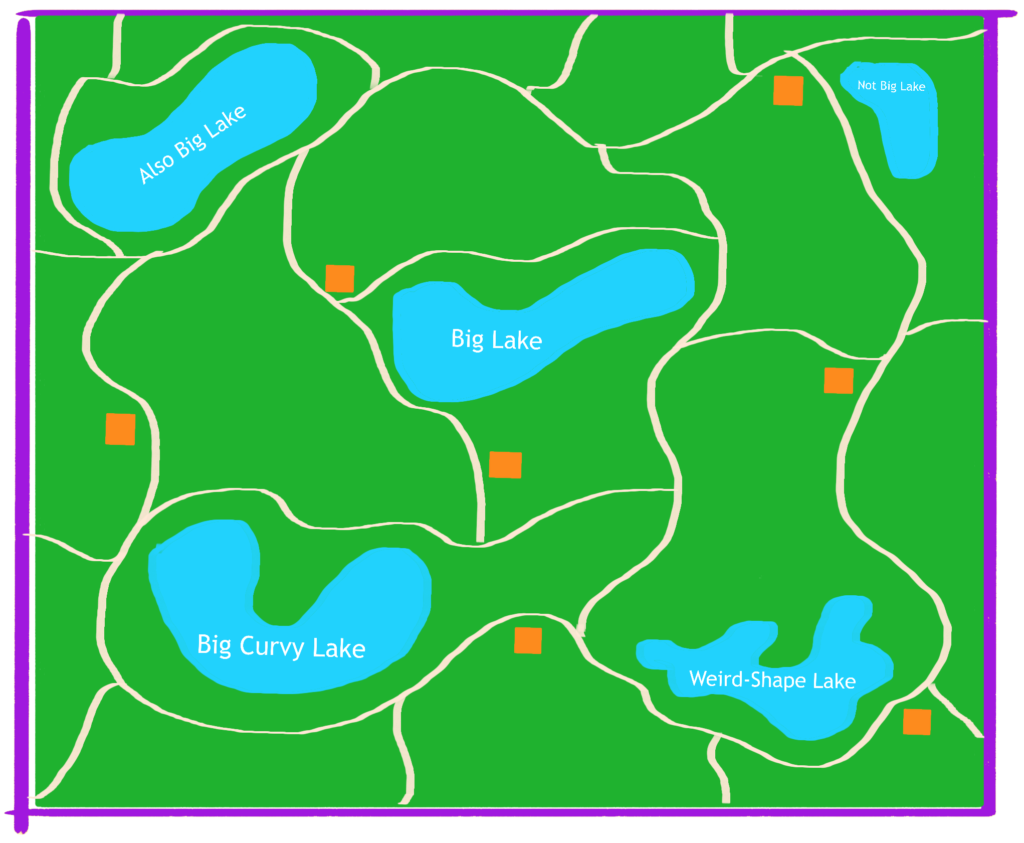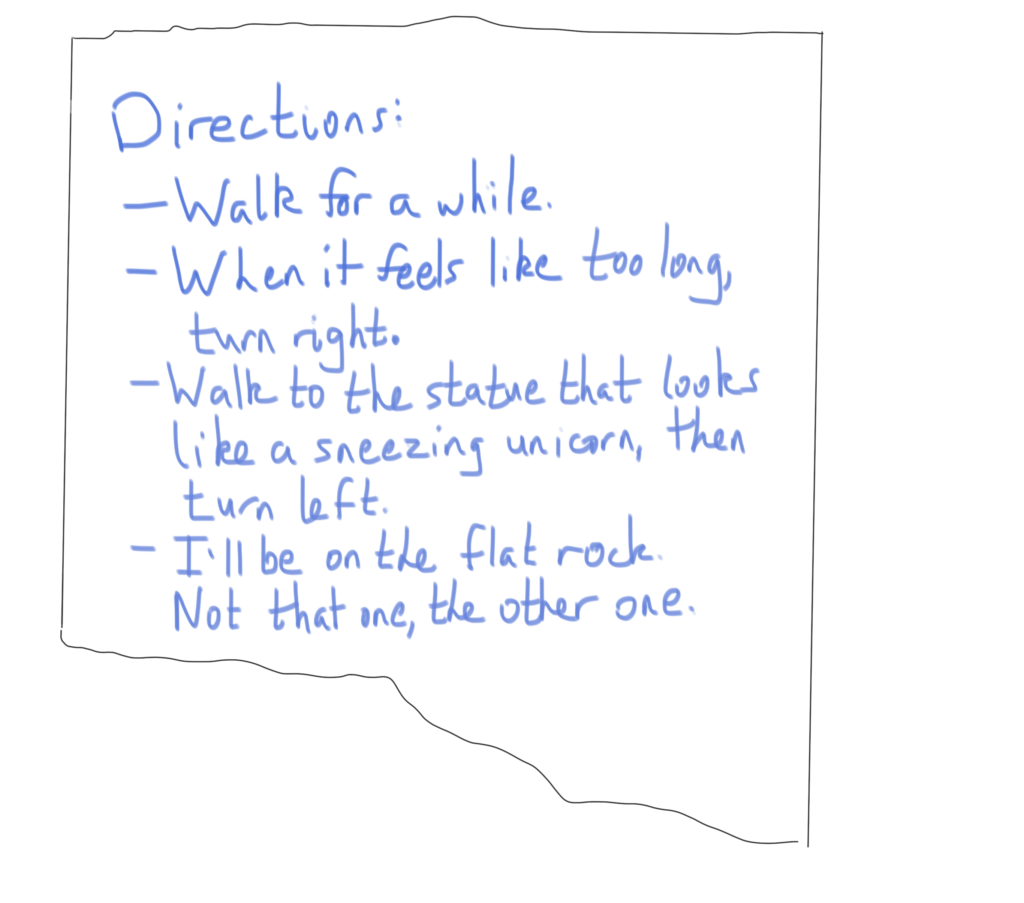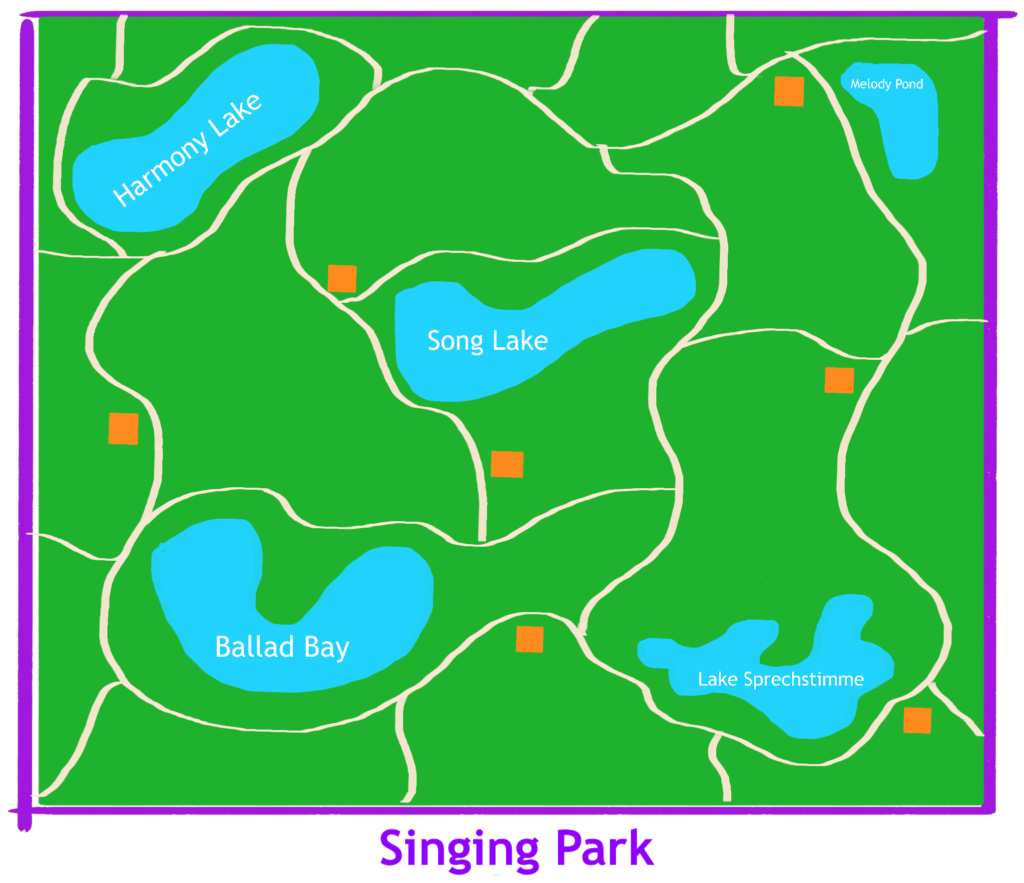We tend to think of learning as a unidirectional journey. We climb ladders and hike to the top of mountains, always making our way toward a destination. Even if we talk about a winding path full of twists and turns, we still picture an end point at which we hope to arrive.
I prefer a different analogy. To me, learning is like getting to know a park.

There’s no mystery as to the size or dimensions of a park. You can walk around the perimeter, and you can look at a map to understand its layout. You arrive at the park before you ever set foot inside! But no one would say they know a park if they haven’t entered it. To learn your way around, you have to go in.
Whether you’re heading somewhere specific or just wandering freely, your first visit to a park is all about seeing what’s in front of you. Perhaps you’ll find the perfect picnic spot or reading nook you were hoping to come across. Maybe you’ll walk out the other side and come back in. The point isn’t what you find or even that you find; the point is that you were there. No matter how your visit ends, you can say, “I went to the park today.”
Your next several visits to the park will probably look a lot like the first one. Maybe you’ll pick a new entrance and wander around in just the same way. Maybe you’ll return to spots you found the first time, or maybe you’ll attempt to return but get lost along the way and find somewhere new. You’re still exploring, and you can still say, “I went to the park today.”
As you continue to visit the park, you’ll start to recognize places you’ve been, and you’ll notice how they change. You’ll see the lawn with that perfect picnic spot on quiet mornings and crowded afternoons. You’ll watch the leaves that shade your reading nook change color and fall. You’ll find yourself describing your favorite spots in that particularly intimate way we talk about spaces. “You know that path with the two big curves, and after the second big curve, there’s a tree on top of a little hill on the right? Just behind that tree is my favorite place to sit.” The details are defined by your personal experience of them.

No matter how many times you visit a park, there’s always something new to discover. Look more closely at the tree next to the one that’s always caught your eye. Notice the bench you usually walk by without giving it a second look. Walk a familiar path in the opposite direction. Let your gaze drift higher, or lower, or narrower, or wider. Every trip to the park is an opportunity to see something new — as long as you keep your eyes open.
This is how we should think about learning to sing. We wander around our instruments, discovering as we go and letting ourselves get lost. Each visit is an opportunity both to head in a new direction and to revisit places we’ve been before. As we get to know our way around, we find comfort in familiar landmarks, but we never stop choosing new paths to see what else is there. We notice how our voice changes from day to day, mood to mood, and season to season. We develop the language to describe how we get around our voice as we know it, language that inherently defines and is defined by our unique, individual singing experience. And no matter how many times we sing, we’ll always have the opportunity to find something new in our voices, as long we remember to keep looking.
Most importantly, we never have to worry about reaching a destination. “I sang today.” We arrived the moment we chose to walk in.

Recent Comments